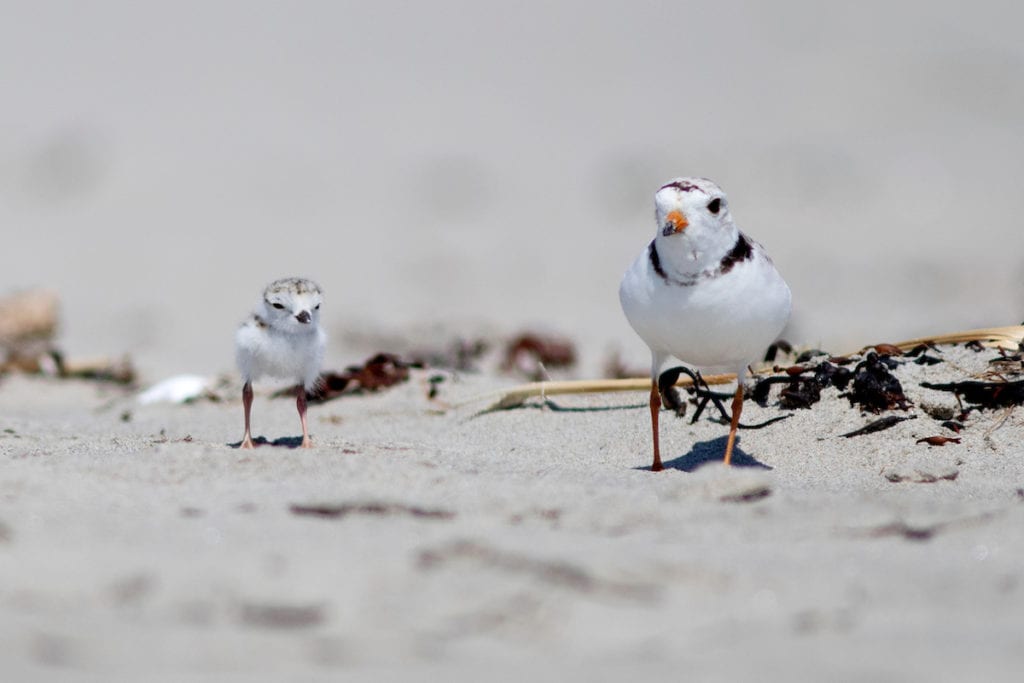
Another summer, another record-breaking year: For the sixth consecutive season, in 2023 we saw a record high number of breeding pairs of Piping Plovers on Maine beaches. Maine was home to 157 breeding pairs this nesting season, with some pairs nesting in places never before occupied or that had been vacant for many years. However, only a total of 201 chicks survived until fledge age. This resulted in our productivity being 1.28, our lowest productivity since 2007 and less than our recovery goals of 1.5 chicks fledged per pair.
Maine Audubon has worked for more than 40 years to restore Maine’s Piping Plover and Least Tern populations with help from our partners, Maine Department of Inland Fisheries and Wildlife (MDIFW) and the U.S. Fish and Wildlife Service (USFWS), as well as volunteers, beach front landowners, town employees, town, state, and federal law enforcement, state park employees, lifeguards, and more! In 1983, there were only six nesting pairs in Maine and the Piping Plover population has reached numbers that have far exceeded what we once thought could be possible.
This past summer brought success stories from some unexpected nesting sites. Some of these successes can be attributed to countless hours spent by dedicated volunteers, increasing public awareness of beach-nesting birds through outreach efforts, as well as a little bit of luck. Drakes Island (Wells), Hills Beach (Biddeford), Pine Point (Scarborough), Crescent Beach State Park (Cape Elizabeth), Hunnewell (Phippsburg), and Chebeague Island fledged more chicks than usual. Two of our southernmost beaches, Ogunquit and Wells, continue to wow with their numbers, although they were lower than last season. Ogunquit hosted 16 nesting pairs, which fledged 24 chicks, and Wells had a record high 16 pairs that fledged 29 chicks.
These incredible little birds never cease to amaze; when Piping Plovers arrive in March, the beach can be an extremely unfavorable place—sometimes it’s even snowing! As their chicks start to hatch, it can be grueling hot with not a cloud in the sky to provide a little shade, not to mention the hordes of people the birds need to navigate through to forage. Piping Plovers continue to incubate their nests or brood their chicks in all conditions. Their adaptability to the harsh beach environment is quite impressive. These little birds can tolerate a lot and seem to get tougher and tougher every year.
When monitoring an endangered species population, it is always good to proceed with caution. Despite an increase in our breeding pairs, the low fledge rate we saw this summer could be a cause for concern. Piping Plovers migrate as far south as Mexico, Central America, and the Caribbean for the winter, then have to make the trek all the way back up to Maine for the breeding season. A lot of variables are at play that are in nature’s hands during these long migrations.
The countless hours spent by all stakeholders working together to strategize feasible ways for these birds and humans to share the beach is immeasurable. We are optimistic that our robust plover community can continue to help these birds thrive during their breeding season on Maine’s beaches for many years to come.
Visit maineaudubon.org/coastalbirds for more information.
